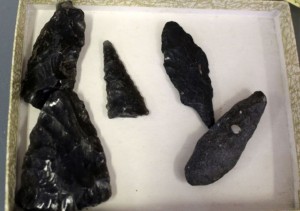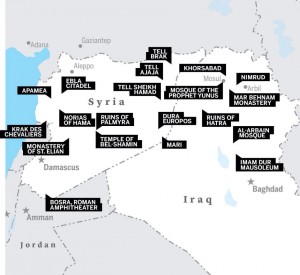Looting is supported by the act of fetishizing the past. This worldwide archaeological con oddly proves beneficial to the economy. Although a functioning economy is desired, this trend of owning such unique and historical artifacts robs it’s the knowledge of the culture that lays behind it. Artifacts are the keys left behind for the world to use to unlock the story of its culture. Looting steals this “key” and makes the knowledge that is “locked up” inaccessible. Because this injustice is such a common occurrence, more and more action has been put into play. Pre-existing looting laws are finally being held to a greater importance.
This movement against looting can be exemplified locally in California’s own “Lake County,” enforcing looting laws for what may be the first time in that area. One reason as to why action has finally occurred is that a drought in the area has created an advantage for looters. The dry land and lower water levels has made it easier to find Native artifacts, making the presence of looting even more noticeable.

Obsidian spears and arrowheads are the most common artifacts put on the black market from Lake County.
The Native American Historic Resource Protection Act exists in California to punish the unlawful disruption of Native American sites. Sadly, this county only began to really acknowledge it when the looting became evident to everyone. This finally led to local authorities being trained in how to put this law into action on the field.
Artifacts stolen from modern-day Native Americans, like many other civilizations, had connected their descendants to their ancestors. Even to those who are not connected to specific artifacts, we all learn what occurred in specific areas hundreds to thousands of years ago, from them. In giving respect to these ancient artifacts, we attempt to heal a part of the past by rescuing their physical history.
Crusades against the horrid of looting have not only occurred locally, but world-wide. As early as World War II, the time of the Nazis, the Monuments Men has taken action in trying to protect artifacts against looters. With the most recent warfare, monuments and ancient artifacts have suffered many causalities. It is known that ISIS (Islamic State in Iraq and Syria), has destroyed many historic sites and receive funds

Historical and archaeological sites, in Syria and Iraq, that have been looted and destroyed by ISIS.
from the “not so” secret world of looting. As a part of the modern world, archaeologists have more resources than they did decades ago, in going against looting: technology and the internet. In the summer of 2014, a team for the Institute of Digital Archaeology helped create a database- the Million Image Database- that digitally documents ancient architecture and artifacts. One of its features is the GPS function, which gives investigators “the time and location-stamped images to see if the artifacts had previously been in one of the documented locations.” During August 2014, the FBI alerted art dealers in high looting countries of the search for stolen artifacts and the importance in going against looting.
The movement against looting has become more widespread due to the accessibility of technology and changing times. Although this is not a new issue that the world is facing, it is finally under the spotlight; change is occurring.
Sources: (Including Pictures)
http://ww2.kqed.org/news/2015/09/21/lake-county-cracks-down-on-looting-of-native-american-artifacts
www.newsweek.com/2015/11/20/institute-digital-archaeology-preserves-cultural-heritage-middle-east-392732.html
Further Reading:
http://www.lexology.com/library/detail.aspx?g=fd0866b0-1c4e-4927-a335-64ca1eca0271
http://www.saa.org/AbouttheSociety/Publications/ArchaeologyandYou/Chapter5ArchaeologyandtheLaw/tabid/1011/Default.aspx
http://artlawjournal.com/using-drones-to-combat-archaeological-looting/

Changing ideals about the importance of indigenous artifacts and land sites speaks to a shift in the values of society for inclusivity of various cultures rather than exploiting cultural property and heritage for profit. Looting has been a long lasting issue in archaeology that severely disrupts the connection of the past and present. The reasons for looting vary but an undeniable disrespect for cultural property is evident. Thankfully, with the advancement of technology and the advocation of archaeologists that fight to bring greater awareness to the effects of looting, action has been taken to repatriate artifacts back to respective communities.